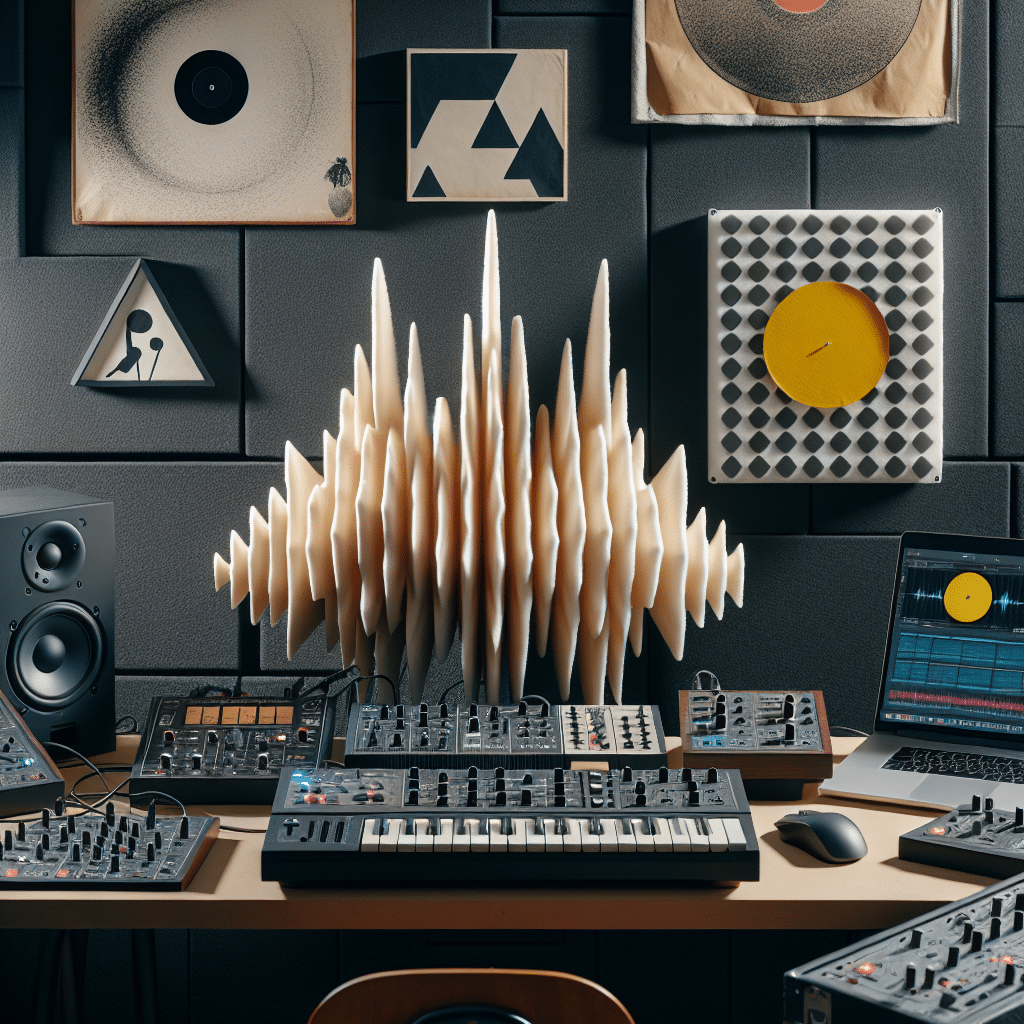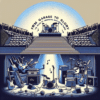Sonic Experiments: How Indie Rock is Redefining Music Production

Indie rock has long been a fertile ground for sonic innovation, and as musical landscapes evolve, so too do the methods by which artists create their music. Today's indie rock scene is marked by a boldness in experimentation, with musicians pushing the boundaries of production techniques, song structure, and instrumentation. In this article, we will explore the significance of sonic experimentation in indie rock, its implications for the genre, its broader impact on music, and the creative process that drives these innovations.
- The Genesis of Sonic Experiments in Indie Rock
- Disrupting Traditional Song Structures
- Innovative Sound Design
- The Role of Collaboration in Sonic Experimentation
- The Impact of Home Studios and DIY Culture
- The Cultural Significance of Sonic Experiments
- Conclusion: The Importance of Sonic Experiments
- FAQs
The Genesis of Sonic Experiments in Indie Rock
Sonic experimentation in indie rock has roots embedded in the genre’s beginnings. Emerging in the 1980s and 1990s, indie rock artists created music outside the confines of major record labels, allowing them the freedom to explore new sounds and styles without commercial pressures. Early pioneers such as Sonic Youth and The Pixies incorporated unconventional song structures, noise, and nontraditional instrumentation, setting a precedent for future generations of indie musicians.
As technology has progressed, so has the accessibility of production tools. With affordable software like GarageBand and Ableton Live, artists can shape their recordings with a level of sophistication previously reserved for high-end studios. This democratization of music production has allowed more artists to engage in sonic experimentation, challenging the status quo with boundary-pushing techniques.
Disrupting Traditional Song Structures
One of the hallmarks of sonic experimentation in indie rock is the reimagining of traditional song structures. While mainstream music typically adheres to a verse-chorus-verse format, many indie rock artists have shifted away from this formulaic approach. Bands like Radiohead, Animal Collective, and Tame Impala have embraced non-linear arrangements and extended instrumental sections, leading to immersive listening experiences that prioritize atmosphere over traditional hooks.
For instance, Radiohead's "Pyramid Song" features a complex time signature that defies conventional rhythms, while Tame Impala's "Let It Happen" includes a sprawling 8-minute duration laden with synth loops and hypnotic grooves. These departures from the standard format challenge listeners to engage with music in a more expansive way, inviting deeper exploration and connection.
See Also: From Woodstock to Today: The Ongoing Impact of Classic Rock
From Woodstock to Today: The Ongoing Impact of Classic RockInnovative Sound Design
The rise of sound design as a central component of indie rock can be traced to the genre's willingness to integrate a diverse range of influences—from electronic music to world sounds. Artists like Bon Iver have used field recordings and unconventional instruments, such as auto-tuned vocals and manipulated samples, creating unique sonic landscapes that transcend traditional rock motifs.
Production teams and artists are keen to play with effects like reverb, delay, and distortion to enhance the emotional impact of their music. Records such as "22, A Million" by Bon Iver serve as perfect examples of how sound design can elevate a song’s emotional weight and creative ambiance. By leveraging technology, indie rock musicians are challenging the listener's ear and expanding their sonic palette.
The Role of Collaboration in Sonic Experimentation
Collaboration has become instrumental in the developmental quandary of indie rock music. Artists now frequently work together with producers, engineers, and even other musicians from outside the genre, which has led to unexpected results and new creative directions. Projects like The Remote Viewer's work—including collaborations with electronic musicians—exemplify how interdisciplinary exchanges can lead to sonic breakthroughs.
When artists unite their respective influences and skills, they create an exciting fusion of sounds that can lead to innovative results. The collaborative nature of indie rock today encourages a free flow of ideas and experimentation, reigniting the pioneering spirit of early indie artists.
The Impact of Home Studios and DIY Culture
The rise of the home studio exemplifies how indie rock artists have harnessed technology to engage in sonic experimentation. Products such as digital audio workstations (DAWs), MIDI controllers, and home recording equipment have granted musicians the ability to conceptualize and produce their work from the comfort of their homes. This shift not only opens new avenues for experimentation but fosters a DIY ethos that resonates throughout indie culture.
See Also: The Best Rock Songs of the 80s: The Ultimate Guide
The Best Rock Songs of the 80s: The Ultimate GuideDIY recording encourages artists to step outside their comfort zones, leading to unprecedented levels of creativity. Albums like "For Emma, Forever Ago" by Bon Iver and "The Glow Pt. 2" by The Microphones are testaments to how lo-fi recording techniques can yield profoundly unique auditory experiences. These practices establish a close connection between the artist and their work while reinforcing the notion that high production value isn’t synonymous with artistic merit.
The Cultural Significance of Sonic Experiments
Indie rock's sonic experimentation is more than an aesthetic; it is a cultural phenomenon. It reflects the shifting landscapes of contemporary society, where traditional genres often blend, morph, and break down. As the lines between music styles meld, indie rock acts as a bridge, facilitating connections among disparate musical traditions.
Moreover, this experimentation serves as a reflection of societal changes, addressing themes like identity, technology, and environmental issues. Artists are increasingly using their platforms to engage with pressing global concerns, lending depth to their sonic explorations.
Conclusion: The Importance of Sonic Experiments
Sonic experiments within the indie rock genre underscore an essential evolution in music production and creative expression. By embracing unconventional techniques, artists challenge listeners to reconsider their preconceived notions of what music can be. The result is a vibrant and diverse musical landscape that captivates, intrigues, and inspires.
As technology continues to reshape the music industry, the role of sonic experimentation will remain paramount. The indie rock genre’s willingness to push boundaries serves not only its artists but also influences emerging musicians across genres, ensuring that the spirit of experimentation thrives in contemporary music.
See Also: Reviving the Sound: How Indie Rock is Shaping Today’s Music Landscape
Reviving the Sound: How Indie Rock is Shaping Today’s Music LandscapeFAQs
Q: What defines sonic experimentation in indie rock?
A: Sonic experimentation in indie rock refers to the use of unconventional production techniques, innovative song structures, and diverse influences that challenge traditional music forms.
Q: How has technology influenced music production in indie rock?
A: Advances in music production technology have democratized the recording process, allowing artists to create high-quality music from home studios, promoting creativity and experimental approaches.
Q: Why is collaboration important in sonic experimentation?
See Also: From Garage to Glory: The Rise of Emerging Indie Rock Bands
From Garage to Glory: The Rise of Emerging Indie Rock BandsA: Collaboration fosters the exchange of ideas and influences, leading to fresh sounds and innovative results that transcend individual artistry, enhancing the creativity of the final product.
Q: How do indie rock's sonic explorations reflect societal changes?
A: Indie rock artists often engage with contemporary issues through their music, addressing themes like identity, technology, and social concerns, thus mirroring the shifting cultural landscape.
Q: Can sonic experimentation help attract new audiences?
A: Yes, by offering unique soundscapes and innovative structures, sonic experimentation can captivate listeners who seek something fresh and different, expanding an artist's reach and appeal.
See Also: The DIY Revolution: How Indie Rock Artists are Taking Control of Their Careers
The DIY Revolution: How Indie Rock Artists are Taking Control of Their CareersIf you want to know other articles similar to Sonic Experiments: How Indie Rock is Redefining Music Production you can visit the category Rock.
